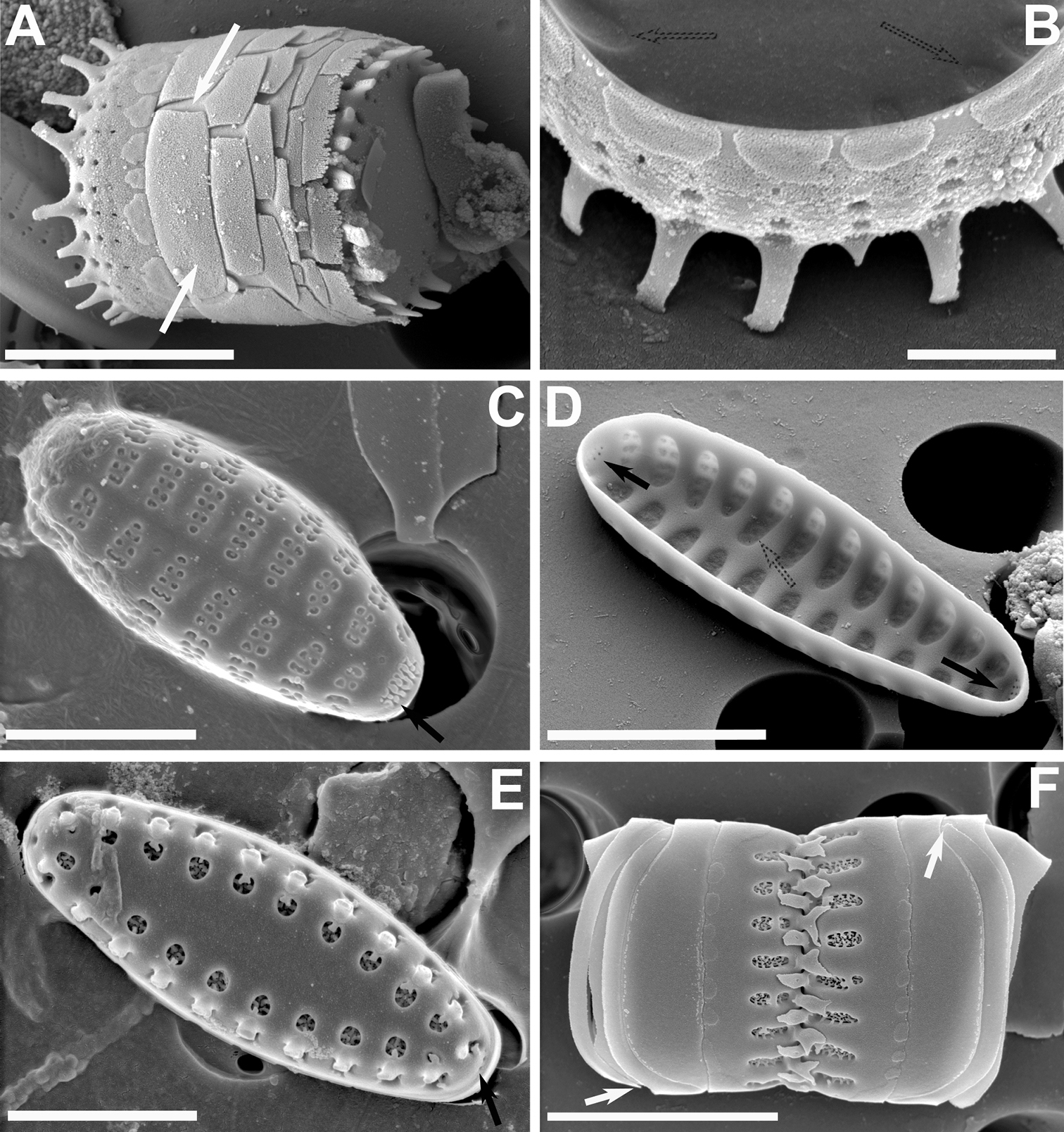
|
||
|
A–F SEM images of little known “araphid” diatoms from the Bolivian Altiplano A, B Nanofrustulum cataractarum A specimen from the Desaguadero River, showing quasifract girdle elements with prominent ligulae (white arrows) B specimen from the Sajama River showing common internal depression into which the areolae open (dotted arrows) and the blister-like depositions of silica at the abvalvar edge of the mantle C, D N. rarissimum from the Desaguadero River C small, spineless valve D internal view showing apical and foot pole pore fields (black arrows) and internal depressions containing all areolae within a stria (dotted arrow) E, F Pseudostaurosira sajamaensis from the Desaguadero River E top view showing gradual transition of valve face to mantle and the reduced apical pore fields (black arrow) F side view of two half cells still attached by heavily silicified spines. Notice open girdle elements (white arrows). Scale bars: 1 µm (B); 3 µm (C, E); 4 µm (A, D); 5 µm (F). |